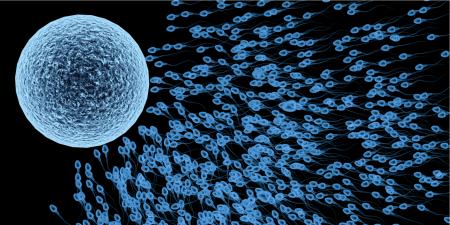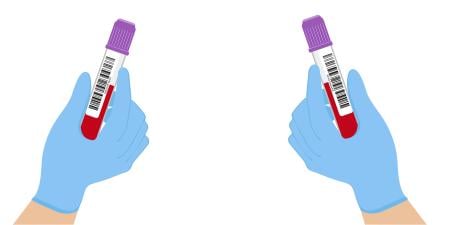Somewhere a young woman gasps—half in horror, half in disbelief—as she learns that she will soon become a mother; elsewhere, at the same moment, a man sheds a silent tear of joy as he discovers that he will soon become a father. In some countries, employers offer incentives in the form of housing or loans to families who limit household size through birth control; in others, governments reward large families with subsidies [1]. In agrarian societies, children have tangible economic value; in industrialized societies, they are—as one author describes—"economically worthless but emotionally priceless" [2].
Parenthood embodies the paradox of being common to all cultures, yet evoking unique responses. The relationship between a parent and child can be among the most intense of human experiences. Its sanctity is revered as the subject of Rudyard Kipling's "Mother-O-Mine"; the tragedy of its loss is reflected in such renowned works as Edvard Munch's "The Sick Child" [3] and Edvard Grieg's "Ballade in G minor," which was written in 1875 following the death of his only child and both of his parents [4]. Undoubtedly, the intimacy of this bond is emotionally provocative and often convolutes ethical decision-making processes in medicine. And whereas in most instances a physician's responsibility is to one patient at a time, in the perinatal period the doctor must be simultaneously and equally concerned with the welfare of two.
We thus devote the September 2007 issue of Virtual Mentor to the parental-fetal disconnect. While traditionally conceptualized in the form of a "connection," in medicine and law this relationship has increasingly come to be viewed as one of duality rather than unity [5], and one of bi- rather than uni-directionality. Indeed, there are scenarios in which parents, by actions or biologic circumstances, may exert adverse effects on the fetus. As part of the clinical cases section, Jennifer Hernandez and Scott Roberts elaborate upon the justness of informed refusal in instances of maternal substance use and the societal tendency to hold mothers to what may be considered supererogatory moral standards. Watson A. Bowes Jr., then invokes the principle of autonomy in his discussion of therapeutic options for women diagnosed with cervical cancer during the second trimester. This is a particularly striking ethical case since options that benefit the woman most may bring great harm to the fetus and vice versa. In other situations, a fetus may produce harmful effects on a parent. Arun Jeyabalan highlights such a phenomenon in this month's clinical pearl using the context of preeclampsia as a maternal-fetal competition for limited resources.
Technologic advances have also catalyzed shifts in the parental-fetal relationship. Egyptians first described their methods of predicting gender in the Kahun Medical Papyrus, dating as far back as 1850 BC: "Let the woman water wheat and spelt with her urine. If wheat grows, it will be a boy; if the spelt grows, it will be a girl" [6]. In Roman-Greek mythology, the barren appealed to goddesses of fertility such as Demeter and Persephone.
Today, however, couples seek assisted reproductive technologies (ART) such as in vitro fertilization, gamete/zygote intrafallopian transfer, and preimplantation genetic diagnosis. From such scientific strides arise new ethical debates for the field of obstetrics and gynecology, as critics question whether we are entering into an era of designer babies. In another clinical case, Marta Kolthoff contrasts the appropriate use of preimplantation genetic diagnosis to screen for "disability" with the potentially improper uses that some foresee as the first step onto a slippery slope toward eugenics. Senait Fisseha expands upon this theme in the policy forum by emphasizing the need for professional regulatory governance of such technologies, which now make feasible the unnatural states of posthumous fatherhood and postmenopausal motherhood. Lucy Frith reconciles the rights of anonymous gamete donors with an offspring's right to know his or her genetic heritage in the op-ed.
Importantly, the repercussions of such scientific developments reverberate beyond the field of obstetrics and gynecology to impact other areas of medicine. In this month's medicine and society feature, Andrew M. Courtwright and Mia Wechsler Doron comment on the societal obligations of physicians and infertility specialists to assist those who wish to become parents and the circumstances under which physicians might be justified in restricting access to ART. Kamalkumar P. Kolappa and David A. Gerber review a journal article on the ethics of pregnancy in transplant recipients and the need for transplant teams to adequately counsel this patient population.
Intractable parental-fetal conflicts may enter the legal arena for recourse. For this month's health law segment, Daniel Zank describes the slow ideologic death of HIV exceptionalism, a death that is contributing to the current political climate governing mandatory perinatal HIV testing. In closing, the medical narrative section features Delivering Doctor Amelia, a fictionalized memoir of an actual medical malpractice case. With this novel as her basis, Catherine Green reflects on the various professional roles of physicians—who during parturition assist with the severance of the maternal-fetal bond, but may ultimately be called upon to restore the parental-fetal connection—and the consequences when these dual functions are interrupted or frustrated.
I now invite you to read the commentaries that follow. The authors represent a variety of disciplines and departments—reproductive endocrinology and infertility, reproductive medical genetics, maternal-fetal medicine, abdominal transplant surgery, neonatology, and bioethics—and a multitude of universities from across the nation and abroad. Through this diversity, I hope you find a well-rounded discourse that adequately addresses the complexity of this topic. I am confident that you will gain useful insights regardless of the specialty of your current or future practices.
References
- David HP. Incentives, reproductive behavior, and integrated community development in Asia. Stud Fam Plann. 1982;13(5):159-173.
- Jones RK, Brayfield A. Life's greatest joy— European attitudes toward the centrality of children. Soc Forces. 1997;75(4):1239-1270.
- Beller GA. Edvard Munch's renditions of illness and dying: their message to contemporary physicians. J Nucl Cardiol. 2006;13(3):309-310.
-
Johannesen KF. Edvard Grieg. Miller D, trans. Accessed August 3, 2007.
-
Ludwig M. Ethics in medicine: maternal-fetal conflict. http://depts.washington.edu/bioethx/topics/matern.html. Accessed August 3, 2007.
- Bruehl FJ. The development of pregnancy tests. Am J Nurs. 1952;52(5):591-593.



